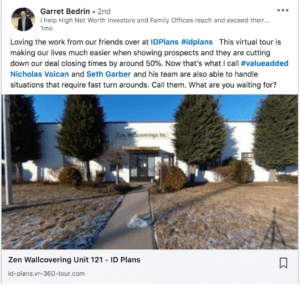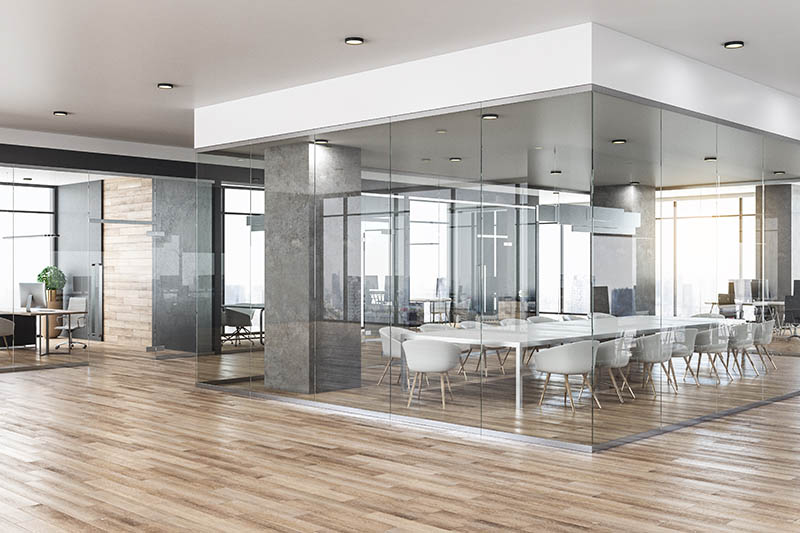Garret Bedrin remembers what the leasing process used to be like for his team at the Bedrin Organization.
They’d send out a broker to take photographs of the space they were trying to lease. Sometimes, they’d draw up a simple sketch noting where the bathrooms and exits were. Then they’d send the information to prospective tenants and wait for the inevitable requests for more details.

“We were behind the eight ball,” said Bedrin, whose New Jersey-based company owns
more than a dozen shopping centers in six states. “It was a very fragmented process that no one wanted to manage.”
It was also, in some cases, a deal killer. By the time Bedrin and his team finished going back and forth with the prospect and collecting all the data they asked for, it could be too late. The prospect may have opted not to continue with the project – or they could have chosen another firm to do business with.
“Time kills deals,” Bedrin said. “I’ve always said that.”
Everything changed once Bedrin discovered ID 360. He loved the idea of having a comprehensive inventory of the assets in his vacant and soon-to-be vacant spaces that would be ready to share with prospects as soon as it was available. And once he saw how much time he saved by having ID 360 in place, they quickly became part of his standard operating procedure.
“By the time we close, we’ve picked up a month or two,” Bedrin said of the amount of time spent on the leasing process. “It’s also cut the back and forth time between us and the tenant by about 50 percent.”
He was even more excited about ID 360 when 360-degree virtual tours were added as a standard feature.
“We were blown away,” he said. “It has given us the ability to take a call and walk through the building with the prospect as if we were there. It’s a game changer.”
The virtual tour paid off big for Bedrin in the case of a recent prospect who wasn’t sure if they wanted to rent a 6,000 or a 12,000 square foot space. Because they were able to see the layout and the flow of the building and start drawing up plans using the CAD files, they quickly realized the larger space would be the perfect fit.
“Giving them all that information helped them figure it out faster,” he said. “It was really helpful for all of us.”
Bedrin also believes that having ID 360 prepared when a prospect asks for information about a property sets the tone for a positive relationship going forward, and it also cements his reputation among all stakeholders as a person who is committed to getting the job done right.
“It shows them that we are serious, that we’re professionals, and that we’re transparent,” he said. “Our prospects know what they’re working with, and that’s important. No one wants surprises.”
Want to learn about how ID 360 can help you lease your spaces more efficiently than ever before?
Contact us today to schedule a demo.
 “We were behind the eight ball,” said Bedrin, whose New Jersey-based company owns more than a dozen shopping centers in six states. “It was a very fragmented process that no one wanted to manage.”
It was also, in some cases, a deal killer. By the time Bedrin and his team finished going back and forth with the prospect and collecting all the data they asked for, it could be too late. The prospect may have opted not to continue with the project – or they could have chosen another firm to do business with.
“We were behind the eight ball,” said Bedrin, whose New Jersey-based company owns more than a dozen shopping centers in six states. “It was a very fragmented process that no one wanted to manage.”
It was also, in some cases, a deal killer. By the time Bedrin and his team finished going back and forth with the prospect and collecting all the data they asked for, it could be too late. The prospect may have opted not to continue with the project – or they could have chosen another firm to do business with.



